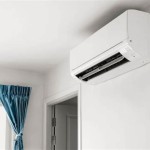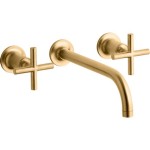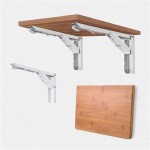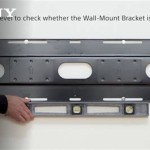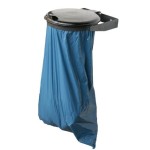Wall Mount TV Outlet Kit: A Comprehensive Guide
Wall mounting a television offers a streamlined aesthetic, maximizing space and creating a modern entertainment setup. However, simply hanging the television on the wall is only half the battle. The visible power cord and HDMI cables can detract from the clean, minimalist look. This is where a wall mount TV outlet kit becomes essential. These kits provide a way to conceal cables within the wall, resulting in a professional and visually appealing installation.
A wall mount TV outlet kit typically includes two recessed electrical boxes, one designed to be installed behind the television and the other near the floor. These boxes are connected by a conduit, a hollow tube through which the power cord, HDMI cables, and other low-voltage wires can be safely routed. This system effectively hides the cables from view, creating a clutter-free appearance.
Choosing the right wall mount TV outlet kit requires careful consideration of several factors, including the type of wall construction, the number of devices that need to be connected to the television, and the desired level of functionality. Understanding these factors will ensure that the selected kit meets the specific needs of the installation.
Understanding the Components of a Wall Mount TV Outlet Kit
The core components of a wall mount TV outlet kit are the inlet box, the outlet box, and the interconnecting conduit or cable pathway. Each component plays a crucial role in the overall functionality and safety of the installation.
The inlet box, typically installed behind the television, provides the entry point for the cables. It usually features a recessed design to accommodate the depth of the television and prevent it from protruding too far from the wall. The inlet box may include a power outlet, as well as pass-through openings for low-voltage cables such as HDMI, coaxial, and Ethernet. Some kits offer a dedicated surge protector integrated into the inlet box, providing added protection for the connected electronic devices.
The outlet box, located near the floor, serves as the termination point for the cables. It typically includes a standard power outlet and additional openings for connecting devices such as cable boxes, gaming consoles, and Blu-ray players. The outlet box may also feature a surge protector or a built-in USB charging port for added convenience.
The conduit, or cable pathway, is the channel through which the cables are routed between the inlet and outlet boxes. It is usually made of flexible plastic or metal and is designed to protect the cables from damage. The conduit’s diameter should be sufficient to accommodate all the cables that need to be run through it without overcrowding. Some kits use a pre-wired electrical cable within the conduit, simplifying the installation process.
Beyond the basic components, some wall mount TV outlet kits may include additional accessories, such as drywall saws, fish tapes, and cable ties. These accessories can facilitate the installation process and help to ensure a clean and professional result. The presence of these extra tools in the kit can be a significant benefit for DIY installers.
Selecting the Right Kit for Your Needs
Choosing the appropriate wall mount TV outlet kit is crucial for a successful installation. Several factors must be considered to ensure compatibility with the wall construction, the number of devices, and desired features.
Firstly, the type of wall construction is a primary consideration. Drywall (also known as sheetrock) is the most common wall material in residential construction. Kits designed for drywall typically include mounting brackets or screws specifically designed for this material. For walls constructed of plaster, brick, or concrete, specialized mounting hardware and drilling techniques will be required. Some kits are explicitly designed for these types of walls and include the necessary hardware and instructions.
Secondly, the number of devices to be connected to the television is an important factor. Consider the number of HDMI ports, coaxial cables, and other connections that will be needed. Choose a kit that provides sufficient passthrough capacity to accommodate all the required cables. It is often beneficial to overestimate the number of required connections to allow for future expansion or changes in the entertainment setup.
Thirdly, the desired features should be taken into account. Some kits offer advanced features such as surge protection, USB charging ports, or integrated power filtration. These features can provide added convenience and protection for the connected devices. The user should also consider the aesthetic appeal of the kit. Some kits are designed to blend seamlessly with the wall, while others may have a more industrial or contemporary look.
It's also important to check local building codes and electrical regulations to ensure that the chosen kit is compliant. Some jurisdictions may have specific requirements regarding the type of wiring, grounding, and fire safety measures that must be followed. Consulting with a qualified electrician can help to ensure that the installation is safe and compliant with all applicable regulations.
Finally, budget is a significant consideration. Wall mount TV outlet kits range in price from relatively inexpensive to quite expensive, depending on the features and quality of the components. It's essential to balance the desired features with the available budget to find a kit that provides the best value for money.
Installation Process and Safety Precautions
Installing a wall mount TV outlet kit is a relatively straightforward process, but it requires careful planning and attention to safety. While many homeowners can complete the installation themselves, it is advisable to consult a qualified electrician if you are not comfortable working with electrical wiring.
Before starting the installation, it is crucial to turn off the power to the circuit breaker that serves the area where the kit will be installed. This will prevent electric shock and ensure personal safety. It's also advisable to use a voltage tester to confirm that the power is indeed off before proceeding.
The first step is to determine the placement of the inlet and outlet boxes. The inlet box should be positioned behind the television, typically centered on the wall. The outlet box should be located near the floor, preferably close to an existing electrical outlet. Use a stud finder to locate wall studs and avoid placing the boxes directly over them. Use a pencil to mark the locations for the boxes and the conduit path.
Next, use a drywall saw to cut openings in the wall for the inlet and outlet boxes. The openings should be slightly larger than the boxes to allow for easy installation. Be careful not to cut into any existing electrical wiring or plumbing pipes. If you encounter any obstructions, adjust the location of the boxes accordingly.
Once the openings are cut, install the inlet and outlet boxes according to the manufacturer's instructions. Secure the boxes to the wall using the provided mounting hardware. Ensure that the boxes are level and flush with the wall surface.
Next, run the conduit or cable pathway between the inlet and outlet boxes. If the conduit is flexible, you can simply route it through the wall cavity. If the conduit is rigid, you may need to drill holes through the wall studs to accommodate it. Be careful not to damage any existing wiring or pipes during this process.
Once the conduit is in place, run the power cord, HDMI cables, and other low-voltage wires through it. Use cable ties to bundle the wires together and prevent them from tangling. Make sure the wires are long enough to reach the devices that will be connected to the television and the outlet box.
Finally, connect the wiring to the inlet and outlet boxes according to the manufacturer's instructions. If the kit includes a surge protector, connect it to the power cord and the ground wire. Once all the wiring is connected, reattach the covers to the boxes and turn the power back on at the circuit breaker.
After installing the kit, thoroughly test all the connections to ensure that they are working properly. Check the power outlet with a voltage tester and verify that the HDMI cables are transmitting audio and video signals correctly. If you encounter any problems, consult the manufacturer's instructions or contact a qualified electrician for assistance.
Proper grounding of the system is crucial for safety. A properly grounded system protects against electrical shock and reduces the risk of damage to connected devices. If the existing electrical system is not adequately grounded, it may be necessary to upgrade it before installing the wall mount TV outlet kit.
By following these steps and taking appropriate safety precautions, you can successfully install a wall mount TV outlet kit and enjoy a clean, clutter-free entertainment setup.

Dual Outlet In Wall Cable Management System With Large Tv Mount 2 Hdmi Cables And Installation Kit Professional Model Two Pro Ikh2 Tvml

In Wall Cable Management Kit Recessed Outlet For Mount Tv Hide Powe

Wsiwpsb1

Baseport In Wall Cable Management Kit Tv Cord Hider For Mounted With Recessed Outlet

Legrand Flat Screen Tv Pro Power Kit White Create A 2 Outlet Ac Receptacle Behind Your Wall Mounted At Crutchfield

In Wall Cable Management Kit With Single Power Plug For Neat Organized Mounted Tv Setups White 27csa17049 The Home

On Q Legrand In Wall Tv Power And Cable Management Kit Pre Wired

Arlington Tvb712bk Information

Baseport In Wall Cable Management Kit Tv Cord Hider For Mounted With Recessed Outlet

Sanus In Wall Power Kit For Tv Media Box White Sa Iwbiwp1 W1 Best



